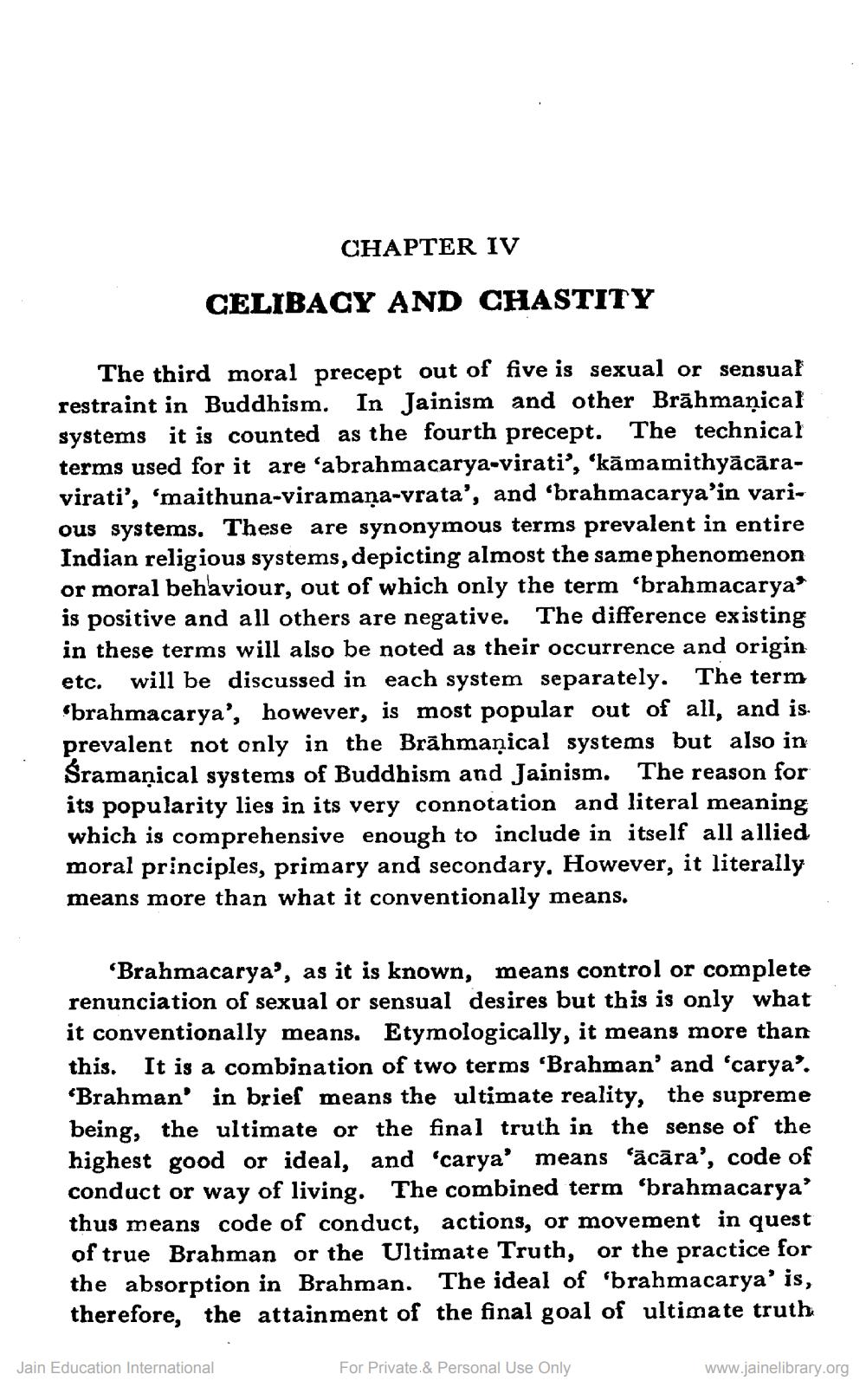________________
CHAPTER IV
CELIBACY AND CHASTITY
The third moral precept out of five is sexual or sensual restraint in Buddhism. In Jainism and other Brāhmaṇical systems it is counted as the fourth precept. The technical terms used for it are 'abrahmacarya-virati', 'kāmamithyācāravirati', 'maithuna-viramana-vrata', and 'brahmacarya'in various systems. These are synonymous terms prevalent in entire Indian religious systems, depicting almost the same phenomenon or moral behaviour, out of which only the term 'brahmacaryas is positive and all others are negative. The difference existing in these terms will also be noted as their occurrence and origin etc. will be discussed in each system separately. The term brahmacarya', however, is most popular out of all, and is. prevalent not only in the Brāhmaṇical systems but also in Bramaņical systems of Buddhism and Jainism. The reason for its popularity lies in its very connotation and literal meaning which is comprehensive enough to include in itself all allied moral principles, primary and secondary. However, it literally means more than what it conventionally means.
'Brahmacarya', as it is known, means control or complete renunciation of sexual or sensual desires but this is only what it conventionally means. Etymologically, it means more than this. It is a combination of two terms 'Brahman' and 'carya'. *Brahman' in brief means the ultimate reality, the supreme being, the ultimate or the final truth in the sense of the highest good or ideal, and 'carya' means "ācāra', code of conduct or way of living. The combined term 'brahmacarya' thus means code of conduct, actions, or movement in quest of true Brahman or the Ultimate Truth, or the practice for the absorption in Brahman. The ideal of 'brahmacarya' is, therefore, the attainment of the final goal of ultimate truth
Jain Education International
For Private & Personal Use Only
www.jainelibrary.org




